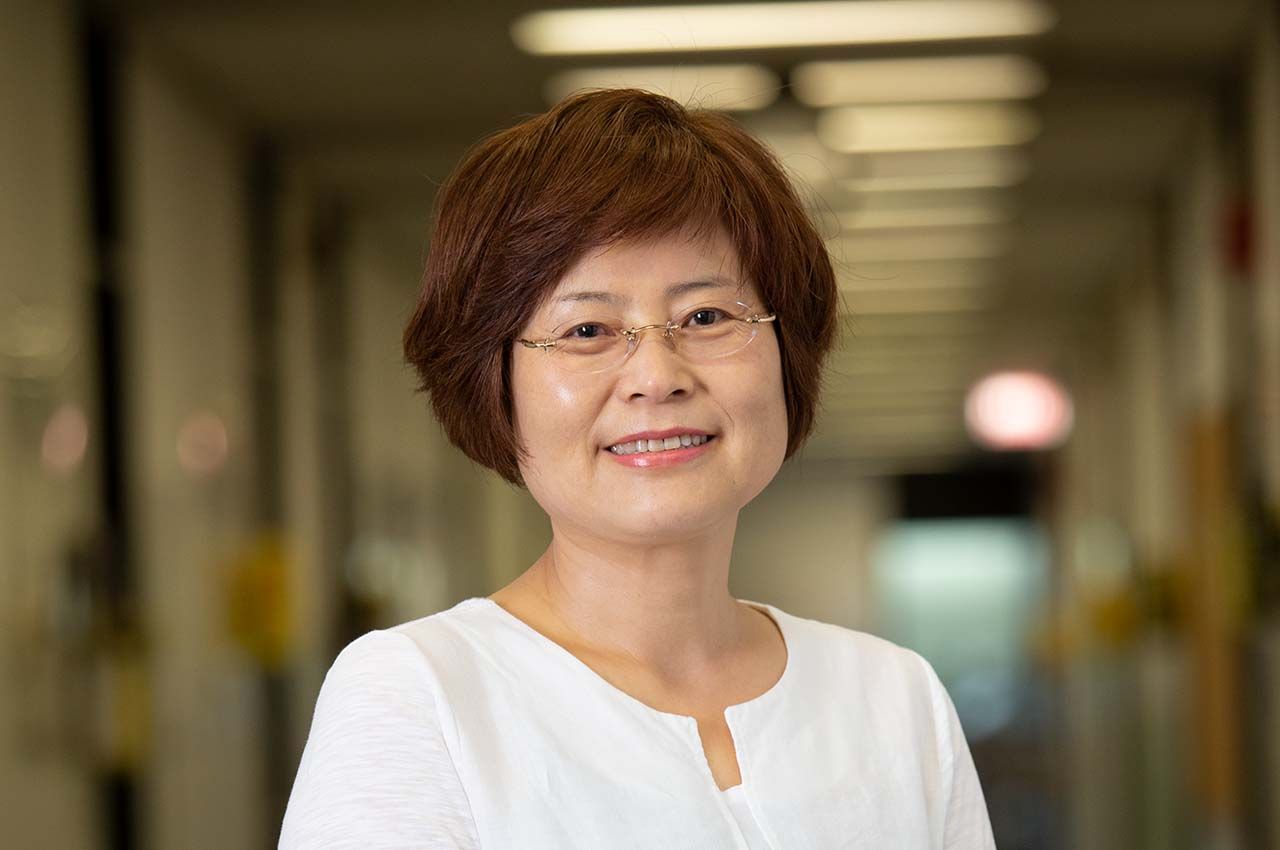New Research Aims to Make PET Scan Imaging Safer

When an imaging agent meant to help detect diseases gets flagged for causing harm to the body, it’s time to reassess. Together with a team of three graduate student researchers in her lab, Illinois Institute of Technology Professor of Chemistry Hyun-soon (Joy) Chong is working to develop a new, healthier imaging agent for use in positron emission tomography (PET) scans. Chong’s four-year research project launched in September 2020 with a grant from the National Institutes of Health totaling $1.5 million. The first and second years of the project are focused on the synthesis of new chelating agents for PET imaging, Chong says, while the third and fourth years will focus more on testing the agents.
PET scans, though non-invasive and more sensitive in nature than other forms of imaging, use a radioactive tracer to locate and detect diseased cells such as tumors, and to produce images of tumors. One component of a radioactive tracer is Zirconium-89, a radioactive metal that often binds to bones and can cause radiation toxicity including bone marrow toxicity. Use of an effective chelating agent—or binding agent, in other words—that can tightly hold Zirconium-89 is critical for safe PET scans, Chong says.
Additional concerns about less stable Zirconium-89-based PET tracers include diminished image quality and inaccuracies in measuring the dosage absorbed by the body. Chong and her colleagues aim to develop chelating agents that can serve as safer and more effective alternatives to the chelating agent for Zirconium-89-based PET imaging that is used now.
“As Zirconium-89 is released, it is accumulated in bones,” Chong says. “Eventually radiotoxicity will happen. That’s a very big health concern—bone marrow toxicity.”
Chong’s research group has substantial previous experience working to advance chelation chemistry.
“A chelating agent is a kind of chemical that binds to a metal,” Chong says. “[We have] a long history of making chelating agents for potential applications in PET imaging of cancer. We are working now [on the fundamental chemistry] to make better chelating agents for Zirconium-89 to realize sensitive and safe PET imaging.”
Once the new chelation agents have been produced, Chong and her team will combine Zirconium-89 and an antibody using the new chelation agent. They will create antibody-targeted Zirconium-89-based PET tracers with which they can test their new chelating agents in live tumor-bearing mice. A longtime collaborator of Chong’s, Buck Rogers, a professor of radiation oncology at Washington University in St. Louis and co-investigator on the project, will provide support with molecular imaging and animal studies.
“We are making many different chelating agents and will select the best agents,” Chong says. “The best one will be conjugated to an antibody, and that antibody conjugate will be labeled with Zirconium-89. We are sending [Rogers] the antibody conjugates. His lab will conduct the preclinical studies involving the tumor-bearing mice.”
If the new chelating agents prove successful in binding Zirconium-89 stably, the team will then work to develop viable preclinical tracers for PET imaging. It is now working on a manuscript about its development of new chelating agents in the early stages of this project, which it plans to publish, and will also be writing other papers on this research as the project progresses.
In the future, Chong says she would like to develop superior chelation chemistry for Zirconinum-89 that can be used to make many different PET tracers.
“There are many antibodies that are clinically approved for cancer therapy,” Chong says. “The new chelating agents bound to Zirconium-89, if successfully developed, can be linked to any of the clinically available antibodies for targeting and visualizing tumors. That’s a follow-up study.”
Research reported in this publication was supported by funding from the National Institutes of Health under award number R01EB029800. The content is solely the responsibility of the authors and does not necessarily represent the official views of the National Institutes of Health.
Photo: Illinois Tech Professor of Chemistry Hyun-soon (Joy) Chong




